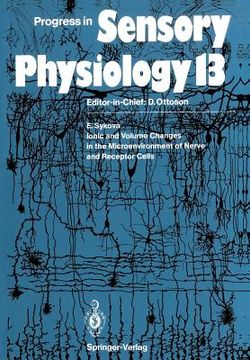Share
ionic and volume changes in the microenvironment of nerve and receptor cells (in English)
Eva Sykova
(Author)
·
Springer
· Paperback
ionic and volume changes in the microenvironment of nerve and receptor cells (in English) - Sykova, Eva
$ 104.20
$ 109.99
You save: $ 5.79
Choose the list to add your product or create one New List
✓ Product added successfully to the Wishlist.
Go to My WishlistsIt will be shipped from our warehouse between
Thursday, June 20 and
Friday, June 21.
You will receive it anywhere in United States between 1 and 3 business days after shipment.
Synopsis "ionic and volume changes in the microenvironment of nerve and receptor cells (in English)"
Stability of the internal environment in which neuronal elements are situated is unquestionably an important prerequisite for the effective transmission of information in the nervous system. During the past decade our knowledge on the microenvironment of nerve cells has expanded. The conception that the microenvironment of neurones comprises a fluid with a relatively simple and stable composition is no longer accepted; the microenvironment is now envisaged as a dynamic structure whose composition, shape, and volume changes, thereby significantly influencing neuronal function and the trans- mission of information in the nervous system. The modern conception of the neuronal microenvironment is based on the results of research over the last 20 years. The extracellular space (ECS) is comprehended not only as a relatively stable microenvironment containing neurones and glial cells (Bernard 1878), but also as a channel for communica- tion between them. The close proximity of the neuronal elements in the CNS and the narrowness of the intercellular spaces provides a basis not only for interaction between the elements themselves, but also between the elements and their microenvironment. Substances which can cross the cell membranes can easily find their way through the microenvironment to adjacent cellular elements. In this way the microenvironment can assure non-synaptic com- munication between the relevant neurones. Signalization can be coded by modulation of the chemical composition of the ECS in the vicinity of the cell membrane and does not require classic connection by axones, dendrites, and synapses.
- 0% (0)
- 0% (0)
- 0% (0)
- 0% (0)
- 0% (0)
All books in our catalog are Original.
The book is written in English.
The binding of this edition is Paperback.
✓ Producto agregado correctamente al carro, Ir a Pagar.

